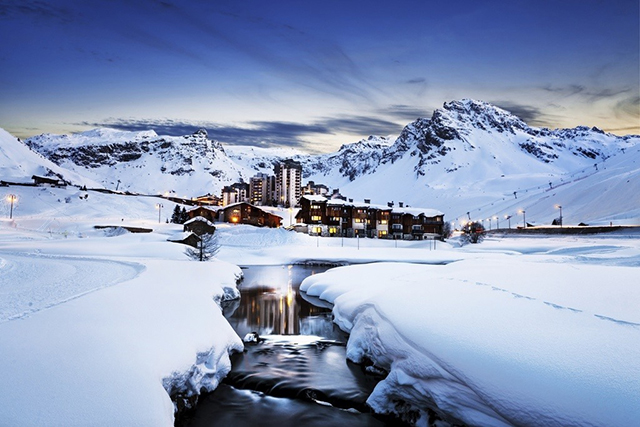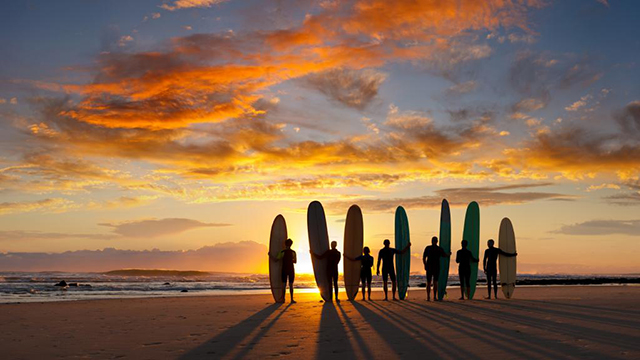If you exercise often, you’ll begin to build your strength and enhance your endurance in the muscle groups used in downhill skiing. You’ll be preparing yourself for the rigors of skiing in the expert zones where both staying power and explosive power are of the utmost importance. First, we’ll get into the why and when you need to exercise, before moving onto the five essential elements of ski-specific exercising. Big White’s latest hot ski Canada deals and special offers entice tourist to go there.
The ultimate body for an expert skier is powerful, from strong ankles to strong shoulders, and every finely-tuned muscle in between. Remember the last time you watched someone effortlessly weave through a mogul field and wondered, “How does he do that?” It’s partly due to practice, and partly to the body awareness and balance that strength training provides. The expert skier, who is physically strong, instinctively cues every part of his or her body. A fit body is like a well-tuned sports car. It handles effortlessly, acting on subtle intuitions.
Skiing requires a number of athletic abilities including technical, physical, and mental skills. This article is all about the physical requirements of expert skiing. Future articles will deal with the technical aspects of all-terrain skiing, as well as establishing the right mind set. But first, to ski strong you need to be strong.

Why do ski exercises?
If you think skiing exercises are just for serious skiers, think again. Strong muscles improve every skier’s performance, whether he or she is a beginner, intermediate, advanced, or expert skier. For those who feel they’ve reached a plateau in their skiing ability, ski exercises may provide the boost you need to reach the next level.
Few sports are as physically demanding as downhill skiing, especially skiing on moguls, in trees, and down steeps. Yet, many skiers hit the slopes after little or no training in the preseason. They pay for it with sore muscles, but that’s only the beginning. The lack of good physical fitness also increases the chances of injury. The most common ski injuries are joint related, and the best way to protect joints is by building muscle. Strong muscles stabilize your joints and, in turn, enable you to control your skis.
In light of the above, this article focuses on building the muscle groups around the joints that skiing taxes the most, including the knees, hips, and ankles. For the knee and ankle joints, we’ll be dealing with the upper leg muscles, including the quads and hamstrings, as well as the lower leg muscles, most noticeably the calves and Achilles tendons. For the hip joints, we’ll be concerned with the core, namely, the hip flexors, glutes, abdominals, groin, and lower back muscles.
Doing the downhill skiing exercises on a regular basis will make your skiing a lot easier, as well as take your skill set to the next level, because you will:
- Build muscle strength in your legs, core, and upper body
- Enhance muscle endurance and staying power for those long runs that never seem to end
- Increase your cardiovascular endurance so you can ski all day long
- Improve your stability and balance in all types of terrain and snow conditions
- Help your foot-to-foot quickness in the tight, tree runs
- Add explosive power for those short, intensive bursts in the mogul fields
- Avoid sore muscles, injuries, and spills
When should you do ski exercises?
Exercising can be done any time you feel like it. However, in the context of the sport of downhill skiing, I recommend you begin exercising at home, two to three months prior to the start of the ski season. If your season kicks off in December, try to begin your preseason conditioning program in late September.
Exercising in the Preseason
However, if you’re already involved in a ski-related conditioning program during the summer months, you’ll be able to shorten you’re fall program from three months to about six weeks. In addition, you should do your ski exercises on three nonconsecutive days each week. This will allow 48 hours between successive work-outs. The muscle groups will have plenty of time to recover.
Does this seem like a lot of work? At first, it will be. But after your first runs of the season, you’ll be amazed at how much easier it is to link smooth, short-radius turns from top-to-bottom, all day long. You’ll look back up the hill and smile, knowing that your exercise program in the fall was well worth the effort. You will have cleared the first hurdle on the road to expert skiing. Physically, you will now be much stronger!
Exercising during the Season
Strenuous activities like downhill skiing, especially at the expert level, promote tightness and inflexibility in the muscle groups. Therefore, stretching before and after skiing will keep you flexible and help prevent common injuries. Should you do the ski exercises after the season starts?
Yes, definitely. After the season starts you can catch up and get in sync by doing the exercises during the week when you’re not out skiing. If you ski on Saturday and/or Sunday, do the skiing exercises on Tuesdays and Thursdays. By exercising throughout the season, as well as skiing, you’ll accelerate the strength building process, and your performance will show a marked improvement.
Exercising in the Postseason
By exercising in the postseason you will maintain your fitness level that you worked hard to implement in the preseason. Aspiring expert skiers need to impart continuity in their conditioning programs throughout the year. Once you become strong, you need to stay strong.
In addition, by participating in a ski-related exercise program from June to September, you’ll be able to ramp up much more quickly in the fall. The summer is also a good time to improve your cardiovascular endurance.
The Five Essentials of Ski-Specific Exercising
Flexibility, cardio, strength, balance, and power are the five essential elements for the expert skier to master. Let’s consider each one of these requirements in turn.
Flexibility: Your range of motion or mobility is of prime importance. Stretching to maintain muscle elasticity, which decreases with age, is vital for skiing. Stretching for skiers will not be covered here, as we have already dealt with this subject in a previous article entitled Ski Fitness for Recreational Skiers.
Cardiovascular Endurance: Aerobic capacity is very important to skiers so they have the stamina to ski in the expert zones, and the endurance to ski all day long. If you wish to improve your cardiovascular fitness, try one of the following activities on three nonconsecutive days per week. Perhaps it would be best to do your cardiovascular routine on Mondays, Wednesdays, and Fridays, and your strength, balance, and power exercises on Tuesdays and Thursdays.
- Lap swimming, 25 laps to begin with, increase to 50 laps
- Brisk walking for at least 30 minutes, preferably 45 minutes
- Jogging, 15 to 20 minutes, but no more
- Rowing machine, 15 to 20 minutes
- Treadmill, 15 to 20 minutes
- Cross-country skiing
- Cycling, short sprints are best
- Inline skating, long distances and short sprints are best
Strength and Endurance: Muscular strength improves the expert skier’s ability to relax, yet still maintain control, and to handle the quick adjustments needed in all-terrain skiing. The movements in alpine skiing include all the major muscle groups, so total body muscular strength is of prime importance. You’ll want to do exercises that strengthen your entire body.
With this in mind, target the following ski exercises and muscle groups:
Essential exercises for the legs – quadriceps, hamstrings, hips, calves, and ankles
Essential exercises for the center – abdominals, hip flexors, glutei, and lower back
Stability and Balance: Why should you care about balance? Well, for starters, it’s the basic skill needed in practically every sport. Changing your center of gravity to match your moves is the key to efficiency in sport. Good balance can help you keep your form when you encounter changing terrain and snow conditions. The result is better skiing and fewer spills.
Slight deviations in terrain often require subtle adjustments in your balance to avoid injury. To enhance your stability and balance, target the following muscle groups:
Essential exercises for the center – abdominals, hip flexors, glutei, and lower back
Fortunately, the exercises that help improve stability and balance work to build muscle strength and endurance in the core, all at the same time. This can be seen if you look back at the previous topic, Strength and Endurance.
Power and Quickness: To improve your reflexes and foot-to-foot quickness, you need dynamic, ski-specific drills from lateral training that simulate the actual movements you do on the ski hill. With this in mind, we’ve included five jumping exercises, which are also called plyometrics, as the essential exercises to improve your foot-to-foot quickness and explosive power.
Plyometrics are commonly referred to as explosive types of exercise drills, and are often used in conditioning programs for elite skiers because the combination of squatting with weights and lateral jumps, sprints, or quickness drills, develops the leg and hip power necessary for high performance skiing.
Before you Start
Caution must be exercised whenever beginning any conditioning program. Use an exercise regimen that’s appropriate for your body type and your present level of conditioning. Please consult with your physician, if you suspect that this ski-specific program is not suitable for you at the present time.
Article Source: http://EzineArticles.com/expert/Jim_Safianuk/1196
Article Source: http://EzineArticles.com/7285

